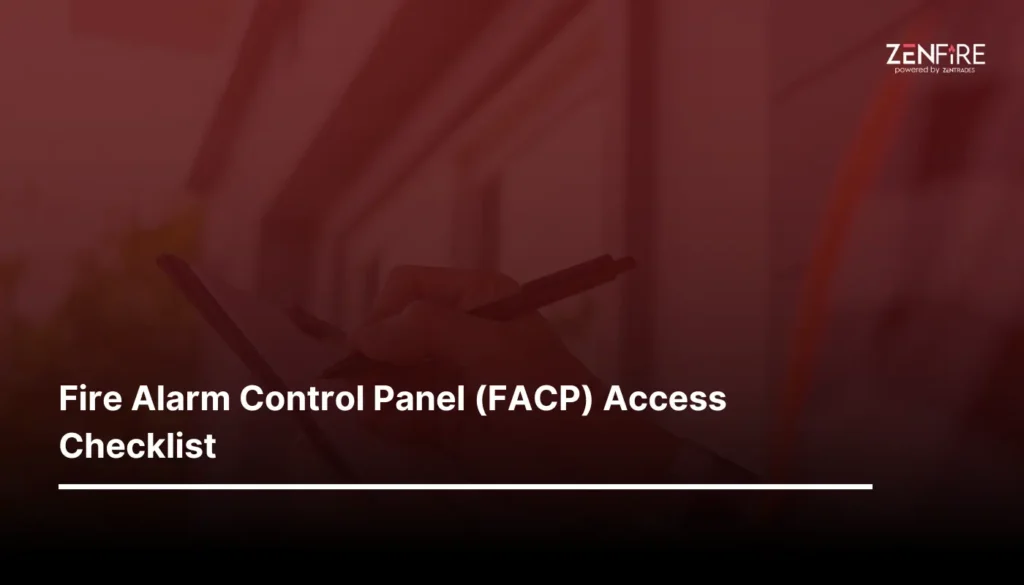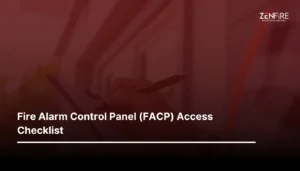Fire Alarm Control Panel (FACP) Access Checklist
What Is A Fire Alarm Control Panel (FACP)?
The most crucial component of your fire safety system is your fire alarm control panel (FACP). The FACP acts as the central processing unit of all your fire alarm systems, receiving and processing information from all devices, such as alarms, smoke detectors, and heat detectors.
A reliable and efficient fire alarm control panel effectively monitors and manages the entire fire alarm system, whether for an entire commercial building or a small apartment building.
A reliable and efficient fire alarm control panel effectively monitors and manages the entire fire alarm system, whether for an entire commercial building or a small apartment building.
Why Conduct A Fire Alarm Control Panel (FACP) Inspection?
Fire alarm control panels are equipped with plenty of useful features that make managing and monitoring fire alarm devices easy. Inspections are extremely important to ensure the critical workings and full functionality of the fire alarm control panel.
Some key features include user interface, event monitoring, and remote monitoring capabilities. These help navigate and operate the panel, store each component’s performance and working insights, and also receive real-time notifications from the panel when not present in the building. These inspections help identify related issues and dysfunctionalities to ensure that the FACP works optimally under all conditions and does not malfunction during emergencies.
Some key features include user interface, event monitoring, and remote monitoring capabilities. These help navigate and operate the panel, store each component’s performance and working insights, and also receive real-time notifications from the panel when not present in the building. These inspections help identify related issues and dysfunctionalities to ensure that the FACP works optimally under all conditions and does not malfunction during emergencies.

Related Reading
Emergency Lighting
Emergency Lighting Checklist Explore More Checklist Download Now What Is Emergency Lighting? Emergency lighting is a crucial component of fire safety measures...
Sprinkler System Inspection Checklist
Sprinkler System Inspection Checklist Explore More Checklist Download Now What Is A Sprinkler System? A sprinkler system, in simple terms, is a...
Fire Alarm Control Panel (FACP) Access Checklist
Fire Alarm Control Panel (FACP) Access Checklist Explore More Checklist Download Now What Is A Fire Alarm Control Panel (FACP)? The most...
Fire Extinguisher Inspection Checklist
Fire Extinguisher Inspection checklist Explore More Checklist Download Now What Is A Fire Extinguisher? Fire extinguishers are primary equipment in situations of...
Tagged alarm panel, FACP, fire alarm system, fire control panel



